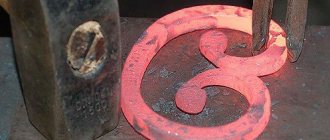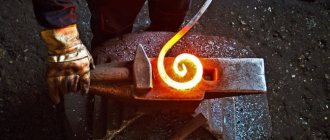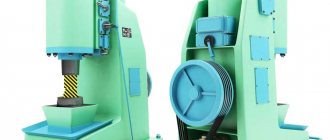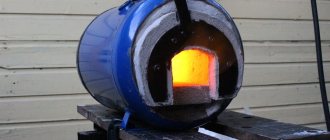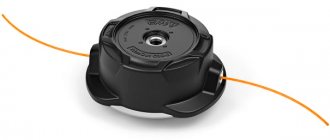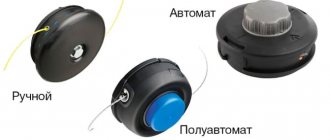Forge shop: description, equipment. Cold forging
Today, forging shops typically do not operate in isolation. Most often they are an integral part of some other large production. For example, they are quite common in the field of mechanical engineering. In addition, they are divided into several types.
Characteristics of the site
A modern forge shop is a combination of several sections. This includes production and auxiliary departments, warehouses, as well as service and household areas.
If we talk about each individually, then production departments are areas where they prepare parts, as well as rooms where forging hammers and presses, stamping hammers and other main equipment for work are located. Auxiliary areas include workshops that repair main equipment. This also includes power plants, heating plants, laboratories, technical control of finished parts, etc.
The warehouses of the forge shop usually store metal, blanks, forgings, burrs, spare parts, etc.
Technological process
Today, the forge shop, like any other area of production, needs to develop a technological process for efficient operation. For workshops of this type, there is one main criterion by which the production process is selected. This criterion is the lowest cost per ton of forgings, which will fully comply with the required quality. In second place when choosing the main production technology is the required volume of parts, as well as possible special requirements for the elements.
Most often in a forge shop, the technological process is divided into the following stages:
- dividing the required material into pieces of the required length;
- This is followed by heating the workpiece and its heat treatment;
- processing the material with high pressure to give it the desired shape;
- this is always followed by separation-type processes, after which finishing work is usually required to remove possible burrs and so on.
Heating the material
When working in a forge, increased attention is paid to the process of heating the workpiece. To successfully complete this stage, it is necessary to very accurately determine the thermal conductivity of the material. Thermal conduction refers to the process during which heat passes from the outer walls of the workpiece inward. This parameter depends on the heat capacity and density of the metal.
Therefore, the higher this indicator, the faster the heat will penetrate inside, which means the less time it takes to warm up. In addition, thermal conductivity is also affected by the type of metal, its chemical composition and the temperature at which the workpiece is exposed.
It is worth noting that most often at temperatures of 700–800 degrees Celsius, the thermal conductivity coefficients of different steels become equal.
Today there is a forging and pressing shop, which is designed to process already heated workpieces. There are two methods of influence - dynamic or static. If a dynamic processing option is used, then forging or stamping of the material is usually used; for static work, pressing is used.
Work in the forging and pressing shop is carried out using only three types of equipment - hammers, stampings and presses. Heating of the material is usually carried out in either combustion or electric furnaces. It is worth noting that work in such a workshop is quite complicated by the fact that in such rooms there is a heating microclimate. For example, in the warm season, the temperature at a blacksmith’s workplace can be approximately 8–10 degrees Celsius higher than the air temperature. All this should be taken into account when placing furnaces and hammers that create high thermal radiation.
Mechanical engineering workshops
The forge shop of a machine-building plant can be divided into three types, depending on its purpose.
There are forging and stamping departments at machine-building plants. In this case, the nature of the parts produced will correspond to the selected types of mechanical engineering. This could be automotive, engine manufacturing and other types.
If we talk only about those types of workshops that can be located on the territory of a larger enterprise engaged in mechanical engineering, then there is another type - auxiliary ones. They are mainly used to produce small forgings for main production. They can be used to repair factory equipment in a forge shop and to produce the necessary tools.
Large machine-building plants set up forging and stamping shops on their territory, since they can produce the necessary parts on a large scale. Ancillary species are usually found on the territory of medium or small factories.
What is cold forging
This technology is also used in blacksmithing. The main difference from the conventional process is that there is no preliminary stage in which the workpiece is heated to the desired temperature. In this case, only local heating of those areas where the bend needs to be made is allowed. This method is based on the plasticity of the metal.
Any metal has parameters such as bending, tensile and tearing strength. Using these features, it is possible to process metal without preheating it. It is worth mentioning here that due to the absence of exposure to high temperatures on the workpiece, the chemical composition of the steel does not change, and therefore tempering, annealing and hardening may not be carried out.
How is forging done using this method?
To carry out cold forging, three types of operations are usually used:
- pressing the workpiece using manual or mechanized equipment;
- embossing is one of several processes that relate to forging without preheating, but most often it is possible to apply an ornament only to copper, since the metal is quite soft and pliable;
- The third processing option is bending, which is one of the main ones.
Pros and cons of using this method
The obvious advantages include the following:
- firstly, there is no need for preheating, which significantly reduces the cost of products, since there is no need to purchase and use heating devices;
- secondly, the products are characterized by greater strength;
- thirdly, it is possible to fit the part to the template with high accuracy;
- the need for additional finishing of the finished part is completely eliminated or minimized;
- the finished product does not have soot residues or other combustion products on the surface.
However, cold forging is not without its disadvantages:
- it is necessary to put in much more effort to achieve results than with hot pressing;
- it is impossible to work with durable metal, which is presented in the form of sheets or blanks;
- in some processing options, a huge amount of force will be required, which requires special equipment;
- Before work, you need to thoroughly clean the surface.
OCCUPATIONAL SAFETY REQUIREMENTS BEFORE STARTING WORK
2.1. Check the serviceability of workwear, safety shoes and other personal protective equipment for the absence of external damage, put on serviceable personal protective equipment appropriate for the work being performed, fasten the shoes, not allowing free hanging ends, fasten or lace up the shoes, put on a hat. 2.2. Do not pin work clothes with pins or needles, do not keep sharp or breakable objects in your pockets. 2.3. Inspect and prepare your workplace, remove all unnecessary items, and do not block the passages. 2.4. Check the availability and serviceability of tools, fixtures and equipment. 2.5. An anvil for hand forging must be mounted on a wooden stand, reinforced with a metal hoop, and installed so that its working surface is horizontal. 2.6. The pliers for holding the processed forgings should be selected in size so that when gripping the forgings, the gap between the plier handles is at least 45 mm. 2.7. Before forging, the heated metal must be cleaned of scale with a wire brush or scraper. 2.8. Before carrying out frame repairs, the vehicle must be installed in a stable position on stands (traces). 2.9. Report all detected malfunctions and malfunctions to your immediate supervisor and begin work only after they have been eliminated.
How to open a blacksmith shop with a budget of 150,000 and 200,000 rubles
In this article we will look at how to organize your first forge shop as a business and calculate how much money you need to invest in equipment.
Forged products have always been in demand. Progress does not stand still and over time many devices for artistic metalworking have appeared. Hand tools used during work make it easier for the craftsman to create patterns and shapes. In skilled hands, metal can take any shape. Previously, the only way to influence metal was fire, and only a few knew blacksmithing; in modern times, anyone can master this craft. The main thing is to purchase reliable equipment for cold metal working.
Many people think about starting their own business. Starting a business is a step into a new life in which you are responsible for yourself and stop being a puppet in the affairs of other people. A common belief is that owning your own business is difficult and risky.
Many people prefer to start a business by selling something, “bought cheaper, sold more.” Agree, the manufacturing business is much more solid. I propose to figure out what a novice master needs to create his own blacksmith shop, with a budget of 150,000 and 250,000 rubles.
Relatively low costs, comparable to the cost of a used foreign car.
Basic forging elements
Often the principle of creating a curl from metal is twisting and bending.
Twisting, performed on the longitudinal axis or winding a round curl around the center, are the main types of this operation and make it possible to obtain a cone-basket object. Including a metal press, it is possible to produce textures of different reliefs:
- crow's foot element,
- dome peak
- faceted lance.
- clamp strip
Products obtained from forging elements
Having understood the variety of objects created using artistic forging, it is worth mentioning the finished goods obtained using this craft. Non-standard forged products, with graceful curves, created taking into account the image of the room, be it an apartment or a country house, will miraculously fit into a modern design solution and into a traditional interior, adding an ancient gloss designed to create a feeling of completeness. In skillful hands the following can be created:
- gates,
- fences,
- stairs,
- window bars,
- balcony railings,
- lanterns,
- lamps,
- furniture.
Forged latticeForged staircaseForged gate
We select equipment for the forge shop
Let's discuss the option of the first budget of 150,000 rubles. The budget is relatively small, but with its help it is possible to equip your blacksmith shop. When choosing tools, you need to take into account all possible parameters: production space, expected equipment performance, and the range of manufactured products. We tried to select a list of the main devices necessary to create forged products that meet our budget.
- The Blacksmith M3-V1 curl bending tool is a modern, reliable hand-held curl bending machine. Ideal for a small workshop. It is compact, mobile, and does not require an electrical connection. A special driving lever with three handles makes it possible to conveniently and easily produce curls of the same configuration and different sizes with minimal force.
- Pipe bender BendMax 200 Smart&Solid. Produced in Russia, it is a hand tool that has no analogues in our country. It is compact, inexpensive, and most importantly reliable manual pipe bender. Works with square and round pipes. Galvanized elements of this machine protect it from rust and corrosion. Special notches on the pressure roller prevent the pipe from slipping during operation. The specific design of the support rollers, a quickly adjustable side ring according to the width of the working area, reliably protects against displacement.
- The tool for longitudinal twisting of rolled metal from squares and strips Blacksmith M3-TR is a reliable, compact tool for the novice craftsman. With its help, by longitudinal winding, you can create the main elements of forging. It is designed for twisting square metal and strips; it is possible to wind several rods or strips at the same time.
- Mobile, manual machine for bending arcs, rings and corners made of metal Blacksmith M3-G, designed for bending and winding rings from metal profiles of round, square section, rod and strip. Creates basic elements by bending metal at different angles and rings of the required diameter.
- Blacksmith M3-V9 manual spiral winding machine. Creates forging elements - chervonka, currency of different sizes and shapes. The kit includes a frame with three links for creating mega-currencies. Domestic craftsmen fell in love with this tool for its ease of use and mobility. A convenient movable lever with three handles allows you to learn the desired curl quickly and without much effort.
- Band saw machine Stalex BS-712N. B is designed for cutting square and round metal workpieces of the required size. The sawing tape has a soft stroke, a workpiece lock, and no vibration, which allows for increased cutting accuracy. A reliable cast-iron frame provides precise cutting and vibration damping, ensuring that the cut site does not need to be specially processed.
- Set of magnetic corners Smart&Solid MAG610 for fixing metal workpieces with square, round profiles, strips, sheets of metal during assembly and welding of metal structures, which makes it possible to use them in hard-to-reach joints. Fast and reliable fastening of parts, eliminating additional fixing devices, reducing welding and assembly time.
- Tool for making baskets Blacksmith M04A-KR is a manual machine designed for longitudinal twisting, creating a decorative element “cone - basket”. The basket is created from four metal bars by longitudinal twisting, with further assembly and welding into the “basket” element. The machine is convenient and easy to use, does not require special skills from the owner of the machine, its design is simple and durable.
- The Blacksmith MP1 manual multifunctional press is designed for high-quality and quick creation of elements of various configurations. Blacksmith MP1 with a wide selection of mandrels allows you to create a wide range of elements from square, round, rod and strip metal. The machine can perform the function of bending a corner and an arc, bending a ring from a metal strip. Equipped with frames for applying houndstooth and leaf textures. Used for crimping edges.
- Blacksmith M06-LX is a tool for creating decorative stripes for collars and coils. It has a durable, reliable and uncomplicated design. The tool is simple and easy to use and is suitable for a novice master. The creation of the clamp strip occurs by rolling the workpiece through shaped rollers. The Blacksmith M06-LX has manual controls to ensure the safety and durability of the machine.
- Blacksmith M05-GX – clamp bending machine. Used to create decorative forged elements from metal strips. The machine comes complete with a handle that allows you to use the lever so that you don’t have to apply force during operation. The compactness and mobility of the Blacksmith M05-GX machine is due to its low weight and small dimensions.
Characteristics of procurement shops and main production shops of NKMZ
Save the link in one of the networks:
KPTs-1 – produces medium and small forgings and stampings for machines produced by the plant and forgings and stampings in cooperation for other plants. The production of the workshop is single and multi-batch. The maximum weight of forgings is 3.5 tons. The total area of the workshop is 1574 m. The production area is 128.35 m. The workshop's monthly program: 100 tons of forgings in the hammer section and 1300 tons in the press section. The workshop includes two bays and a thermal department.
Span 1 is a hammer section, it consists of a section for the production of forgings on hammers and stampings on presses, here is a section for coiling springs. The rest of the span is a thermal section. There are 14 units of basic equipment on the flight deck: two two-ton hammers. Two hammers with a mass of falling parts of 1 ton., two hammers with a mass of falling parts of 0.5 tons. All hammers are steam-air. A mechanical press is installed on the span. 100t force, screw press. On the first flight, parts weighing up to 320 kg are processed. Round-section rolled steel is used, the maximum rolled section is 220 mm. The rental products are stored on an open overpass.
Span 2 – press, specializes in the production of parts on steam-hydraulic presses with a force of 1000 tons, 750 tons. There is also a hammer with a mass of falling parts of 3 tons. Parts are forged from ingots in weights of 1.6 tons, 2 tons, 2.5 tons, 3 tons, 4 tons, 4.5 and 5 tons. Among the means of mechanization, there are two manipulators for presses with a lifting capacity of 5 tons.
, one manipulator for the hammer with a lifting capacity of 3 tons, near each press there is a rotary table with a lifting capacity of 5 tons. In the western part of the press span there is a furnace department, which includes: three final furnaces and 8 heating furnaces, which are served by a hinged machine with a lifting capacity of 5 tons.
The span is served by 6 cranes with a lifting capacity of 15t, 10t, 5 and 6.5t.
Bay 3 is a furnace bay, on which heating furnaces and thermal furnaces for processing forgings are installed. There are 7 furnaces with retractable racks, 5 electric heating furnaces and 2 quenching tanks - one water, the other oil. On the span there is a spring testing area and a spring cleaning area, and there is also a shot blasting chamber. Heat treatment is carried out both primary and secondary. The workshop has a powder metallurgy section where electrographite bushings are pressed, sintered, and calibrated. Main equipment: press – hydraulic force 630t., 250t., 400t., 350t.
KPC-1 is connected by cooperative supplies with other workshops of the plant. The shop receives blanks (ingots) from the open-hearth and shaped foundry shops. Forgings and stampings are transferred to the plant's machine shops.
General characteristics of the workshop
This is one of the main procurement workshops of NKMZ. The workshop produces unique steel castings for the production of crushing and grinding, blast furnace, forging, rolling equipment, as well as consumer goods. The total area of the workshop is 30,160 m2, and the production area is about 17,000 m2.
The workshop consists of 13 spans.
Bay 1 – includes a section for the production of large rods. Equipment: chamber dryer, mixing beurs, loading equipment with a lifting capacity of 10 - 20 tons.
Span 2 – includes a hand molding section for the production of molds weighing up to 100 tons. Equipment: caissons. Drying of forms is carried out using portable dryers. The upper halves of the mold are dried in a chamber dryer. Liquid metal is supplied from the open-hearth shop in buckets by electric bridge cranes with a lifting capacity of 50, 60, 75, 125 tons.
Span 3 – includes a hand-molding section for the production of castings weighing up to 30 - 40 tons. Equipment: rotary feeder, chamber dryer, installation (LSS - liquid self-hardening mixture), knockout grid with a lifting capacity of 60 tons and a 40-ton shaking table.
Span 4 – includes a section of the open-hearth workshop where two electric arc furnaces are installed.
Span 5 – includes an assembly and casting area equipped with a knockout grid weighing up to 15 tons.
Span 6 – includes a molding section for the production of molds for casting weighing up to 1.5 tons. Equipment: shaking molding machines with a lifting capacity of up to 5 tons and impulse molding machines.
Span 7 – includes the rod production area. Equipment: shaking tables, rotary feeders, LSS installation, chamber dryer.
Span 8 – includes a machine molding section for the production of castings weighing up to 5 tons. Equipment: shaking molding machines with a lifting capacity of up to 10 tons. Between bays 6 and 9 there are chamber-type dryers.
Span 9 - includes an assembly and casting section, a section for the production of rods from CTS (cold-hardening mixtures).
Span 10 – includes a model workshop for performing minor repairs of model kits.
Span 11 – there are two sections here. The first is the production preparation area and the second is the mechanics area. In the preparation area, refrigerators and hooks are manufactured. In the mechanics area, parts for the repair of technological equipment are manufactured.
Span 12 – this is where the mechanic’s section’s spare parts warehouse is located.
Bay 13 – warehouse for model kits, warehouse for knocked-out flasks, knock-out gratings with a lifting capacity of 80 tons.
The mixture preparation department is located in a separate building. The services of the planning and distribution bureau, accounting, and timekeeping are located in the utility premises.
General technological process of casting manufacturing
The model arrives at the molding area. Molding operations fix the coordination plate or sub-frame on the table of the molding machine, and wipe the models with a mixture of graphite and kerosene. A gating system is laid along the main line. The model, the gating system and under the molds are lined with a mixture of 80 mm.
The boxes are installed on pins and secured to the machine table. When making the upper halves of the molds, molding hooks are installed on the mixture layer. Then the flasks are filled with the filling mixture. Next, ventilation slopes are made over the entire area of the half-mold. The half-mold is tilted, the receiving table is lowered and the model is removed from the mold.
Then the mold is dried and poured. After cooling, the casting is knocked out.
Workshop staff and technical services
In total, the workshop employs 1,100 people, including: main production workers – 540 people; auxiliary workers - 460 people; engineering and technical personnel - 80 people.
The following technical and technological services operate in the workshop:
BPP - production preparation bureau. Purpose - drawing up and issuing planned tasks at all sites, preparing technology for the production of castings;
PEB - planning - economic bureau - resolves all economic issues related to the work of the workshop;
Quality Control Department – carries out acceptance and quality control of products.
All work of the workshop is supervised by the workshop manager. The chief has 4 deputies subordinate to him:
- deputy head of the production department,
- deputy head of the production preparation workshop,
- deputy head of the technology workshop,
- deputy head of the department for labor and wages.
The mechanic is subordinate to the workshop manager.
Advanced technological processes used in the workshop
The following advanced technological processes are used in the workshop:
- production of molds and rods based on reinforced concrete,
- production of rods based on CTS,
- use for the production of pulse molding molds and cores,
- use of vacuum film forming,
- the use of block molding for the manufacture of rods.
Forging and pressing shop No. 2
KPC-2 produces forgings in accordance with the plant’s product range, as well as for its own repair needs. The workshop's products include the most critical machine parts (shafts - gears, gears, cold and hot rolling shafts, etc.). The total area of the workshop is 26630 m2. The workshop includes 7 spans. KPC-2 is connected by supplies through cooperation with other workshops of the plant (open-hearth workshop, mechanical workshop No. 3,5,7,11 and others)
Workshop equipment
The following unique equipment is installed and operated in the workshop:
hydraulic press with force
(100MN)10000ts. - 1 PC.
(30MN) 3000ts. - 1 PC.
(25MN)2500ts. - 1 PC.
Each press is served by 8 heating furnaces. All furnaces run on natural gas. Metal heating temperature 1180 – 1200 C.
Heating furnaces are installed on the first span, serving presses with a force of 30–25 MI.
On the seventh span there are furnaces serving a press with a force of 100 MI; the second and sixth spans are press spans; the fifth and part of the sixth span are specialized in primary heat treatment; the third and part of the fourth span undergo final heat treatment. Isothermal annealing in open furnaces is used as primary heat treatment.
Hardening in vertical furnaces is used as final heat treatment. The workshop has 14 cranes of various lifting capacities. Their distribution along spans depends on cargo flows and the mass of processed forgings. The maximum lifting capacity of the cranes is 250 tons.
Forging in presses, mechanized with the help of cranes and manipulators.
Forging production and prospects for its development
Forging production largely determines the level of development of all mechanical engineering. Millions of products of different types, weights, shapes, and sizes are produced by forging and stamping. The most critical and heavily loaded parts are made from forged and stamped forgings. Industries such as transport, energy, metallurgical engineering, press construction and many others cannot exist and develop without the use of metal forging.
One of the main tasks facing the forging industry is saving metal. Out of approximately 160 million tons of annual steel production in our country, about 8 million tons are lost annually into chips. Although this waste is generated in machine shops, it is essentially waste from forging production, which cannot always ensure the production of accurate forgings without their significant subsequent processing by cutting.
Improvement of technical processes
Further improvement of forging and stamping processes, ensuring their wider use in mechanical engineering, is aimed at obtaining forgings with dimensions and shapes approaching the dimensions and shape of finished parts for assembly. This leads to a reduction in the volume of cutting processing, a reduction in metal losses in chips, an increase in labor productivity and a reduction in production costs.
In a number of cases, cutting processing is being replaced by high-precision pressure processing processes with a significant increase in the technical and economic indicators of production. Special types of stamping make it possible to obtain finished products (rivets, bolts, pins, nuts, etc.
), as well as machine parts (turbine blades, gears, stepped and cam shafts, etc.), which require almost no additional cutting processing. Modern hot stamping machines provide low-waste stamping of fairly accurate forgings, such as gears, rings, flanges, bolts, nuts, etc.
, from rods with a diameter of up to 80 mm with a capacity of up to 70 pcs. in a minute.
On the basis of experimental and theoretical studies, forging modes have been improved using more advanced designs of strikers. Forging is being introduced with uneven heating of workpieces, in which the greatest deformation is concentrated in the desired area of the workpiece volume in order to improve the quality of the metal, which is especially important for large ingots. The possibilities of increasing the maximum mass of forged forgings to 400 tons or more are expanding.
Forge shops are being equipped with increasingly powerful, productive and precise equipment. The main directions of economic and social development of the USSR for 1986 - 1990 and for the period until 2000 provide for rapid growth in the production of forging and pressing equipment with a significant increase in its technical level. In the twelfth five-year plan it is planned to increase the production of modern forging and pressing machines equipped with automation equipment.
Automation
Mechanization and automation of forging and stamping processes are being increasingly introduced. Based on modern advances in electronic and computer technology, fundamentally new control systems for machines and technological processes are being created, various manipulators, robots, etc. are used. Some plants have introduced software control devices to control and ensure accurate dimensions of forgings when forging on hydraulic presses.
Intensive work is being carried out to improve design and technological developments. The use of machine methods for designing technology, tooling and equipment allows us to optimize the search for technical solutions and significantly increase the level of forging and stamping production in the near future.
Reconstruction
As a result of the reconstruction of individual plants, the introduction of new production capacities and the consolidation of small forges into large ones, the scale of forging production in forging shops is increasing. At the same time, favorable opportunities are created for specialization in the production of forgings by reducing the range of produced forgings for each of the workshops in accordance with the capabilities of a given production (type, size and number of pieces of equipment).
Under these conditions, the cost of manufacturing forgings is reduced and labor productivity is increased through the use of specialized equipment, complex mechanization and automation, the introduction of more advanced technology and progressive methods of labor organization. Specialization simultaneously involves the cooperation of various industries for the mutual provision of forgings that are not manufactured in this production.
Based on the principles of specialization and using its advantages, centralized production of the same type of general machine-building forgings of gears, shafts, flanges, valves and others is organized at special forging plants (central bodies) with an output of 400. . . 500 thousand tons of forgings per year, as well as in specialized forging and stamping shops with the production of about 200 thousand tons of forgings per year.
Among the specialized workshops, the majority are stamping, but there are also forging ones, for example, specializing in forging axles for railway transport. Some metallurgical plants have specialized workshops for forging ingots.
Although forging is inferior to hot stamping in terms of productivity and accuracy of forgings, it nevertheless has its own rational area of application. This is primarily the production of small series of forgings of small and medium weight (100 ... 200 kg), when the production of expensive dies for hot stamping is not economically feasible.
In such cases, forging with hammers using a universal tool - strikers - is more economical. Large forgings (especially those weighing tens and hundreds of tons) can only be produced by forging on hydraulic presses. In the total output of forgings produced in our country, on average 30% are forged forgings, and 70% are stamped.
However, for example, in heavy engineering, the number of forgings reaches 70%.
Hand forged
Hand forging is necessary in single and small-scale production of forgings for the manufacture of parts for experimental machines and those necessary for the repair of equipment, for the manufacture of special tools, etc. Almost all factories and all repair shops will continue to use hand forging for a long time. Hand forging work can only be performed by highly qualified workers.
Further prospects for the development of forging production in our country largely depend on the level of professional training of the new replenishment of blacksmith workers, who must perfectly master this honorable and very necessary profession.
Source: https://www.metalcutting.ru/content/kuznechnoe-proizvodstvo-i-perspektivy-ego-razvitiya
OCCUPATIONAL SAFETY REQUIREMENTS IN EMERGENCIES
4.1. In the event of a fire, report the incident to management and use primary fire extinguishing equipment. If necessary, call the fire department by calling 101 or 112. 4.2. In case of an accident at work: - release the victim from the traumatic factor, while maintaining your own safety; — provide first aid to the victim, if necessary, call an ambulance by calling 103 or 112; - take measures to preserve the situation of the incident, if this does not create a danger to others; inform management.
